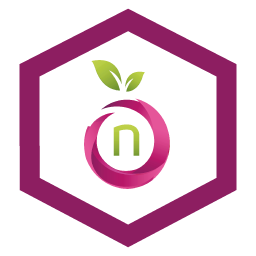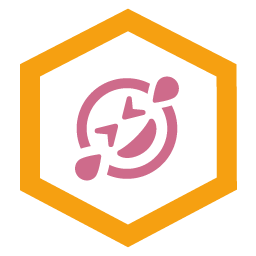Strategies to deal with writer's block
In creative professions such as ours, one can not rely on creativity springing out all by itself. Sometimes it needs a bit of a helping hand. In the following blog entry, we show, step by step, how we deal with writer's block..
Strategies to deal with writer's block
The first step in dealing with writer's block is determining at what point in the creative process it actually appears. We have identified four key points where the creative flow may stall.
We offer tips and ideas to overcome the following barriers:
- How do I motivate myself to start the creative process?
- How do I find a topic that I can write about?
- How do I prepare enough material for my topic?
- How do I write the text?
The following tips won’t necessarily work for everyone; but we in the NameRobot team find that they work very well for us, when it comes to creative processes. This is not only true for the writing itself, but also for finding names, developing and planning new functionalities and all other creative tasks.
And don’t forget: creativity is not just about inspiration, for the most part it’s about simple perspiration. And unfortunately you have to sit down and just get started. Thoughts and ideas develop best when they can build on an existing idea - just like a crystal can only grow if a nucleus created. So, let's go!
How do I get myself motivated to start the creative process?
All beginnings are difficult: the famous fear of the white sheet causes many creative people to be stricken with writer's block before the first letter is even written or the first key is struck. So to get the creative process started:
Turn off excuses for procrastination
Having a quick look at Facebook or Twitter, having your favourite series on in the background and quickly sending your best friend a message by instant messenger so that you can sort out your plans for that evening... Numerous distractions make it hard to concentrate fully on writing. People in the trade call this "Procrastination".
So, as difficult as it may perhaps be, turn off all distracting media and just for once, close all your browser tabs. In an emergency you might want to switch of your internet connection altogether for the duration of your writing task. Of course, this only works if you don’t depend on being able to do research online.
Establish a regular schedule.
"What can you do today that will let you breathe more easily tomorrow?" may be a popular motto, if you can divide your time freely. However: if you want, for example, to blog regularly, you should establish a firm timetable for writing.
For example: "On Monday, when I'm well rested with new ideas from the weekend, I’ll write a blog post, on Wednesday, when my readers are particularly interested, I’ll proof-read it one last time and publish it." This will be held to, come what may. A recurring appointment in the calendar will be a reliable reminder and will prevent cases of "Oops, totally forgot.".
Actively look for inspiration
Starting to write without any ideas at all is not very fulfilling. Therefore, it is important to search for inspiration actively. The romantic notion that good ideas come from nowhere, is not always true. Often it is hard work to pinpoint a specific topic. Don’t wait until a great idea comes along all by itself. A little bit of initiative can go a long way.
How do I find a topic that I can write about?
Not everyone has trouble finding a specific topic that is worth writing about. But it can often be difficult to select one specific topic from a broad spectrum of possible topics. For example, in our Name-Finding Blog we talk about anything to do with finding names. It’s not always easy to generate a theme for a single blog post from such a wide selection.
Finding channels of Inspiration
To generate inspiration for writing or for creative processes in general, you should therefore set up different channels that supply you regularly with new ideas, for example:
- Subscribe to the RSS, Twitter and Facebook accounts of interesting creative minds.
- Set up Google Alerts to inform you of pages on your subjects which are newly listed on Google.
- Regularly search Twitter for relevant hashtags, or use Twilerts (chargeable).
Brainstorming for ideas
Starting with a basic idea or a generic thought, a writer can whittle down their options, to refine it to a specific topic. There are countless techniques for brainstorming; in the NameRobot team, we use the following:
- Classic meetings with the whole team or parts thereof. A secretary not only keeps the meeting to the agenda, but keeps a separate note of all the ideas.
- Our own brainstorming tool helps if you want to perform an "idea session" on your own and also provides support for writing down unexpected ideas.
- In order to approach a complex subject, mind mapping can sometimes be useful.
Collect the ideas which are flying around
Each of us has ideas. The only problem is that we forget most of them after a short time. This is no wonder, with the wealth of information that bombards us every day. Keep your eyes and ears open, and you will be surprised at how many ideas you come up with in everyday life. Even ideas drawn from other projects, are often promising.
What is important is to gather up any and all ideas, even if they are still small and insignificant, and write them down straight away! It helps to have either a real notebook that you always keep with you, or alternatively a notepad program or app for example a memonic or electronic version. Here any inspiration is first collected without being filtered in any way. If need be, you can browse this (and this often generates more ideas).
How can I prepare enough material for a topic?
A good idea on its own is not enough to write a good text. The topic must be filled with content and that content must be sorted and placed in a meaningful order and structure. The more preparation is done, the easier it is to write the text, as it only needs to be converted from elaborate bullet points into sentences.
Creative techniques for the development of ideas
To develop further material for an article, creative minds at Name Robot use various techniques to look for unusual approaches and to take an unconventional look at the issue. The following creative techniques have proved useful:
- Use questions such as "What is the opposite?" according to the so-called Osborn method, this can extend existing ideas.
- Scan newspapers: Scan through a newspaper for all headings, sub-headings, captions and other bold print for inspiration on your topic. After this you will certainly have a handful of new approaches.
- Look at some very different topics to find some very different approaches.
NameRobot founder Mark says: "When I am thinking of a fashion brand, I read travel magazines, or when I am thinking about software names, I read a recipe book. ;-) "
Deeper investigation of the topic
Here opinion is split: some writers swear by working out ideas by themselves in order to provide unique content. Other creatives find inspiration through further research on the chosen topic. It is, of course, important that any ideas or quotations are appropriately referenced. That’s just good manners.
In addition to the ubiquitous Wikipedia, ideas can be found in community portals and of course - particularly on specialist topics - good and influential blogs.
Order bullet points
After extensive research, you should have a lot of bullet points. These will now need to be sorted in order to achieve a meaningful structure for the subject. It is often useful to generate multiple sub-headings and arrange the bullet points under each theme.
The advantage of this procedure is that this thorough groundwork means that writing the actual text requires almost no creative power anymore, but can be easily processed. In practice, the preparation of the theme, is, however, often concurrent with writing on it. The main thing is that it flows!
How do I write the text?
Each author goes about writing a text a little bit differently. It is important that you find your own way of how best to get into the flow of writing. Here are a few tips that can help you to focus solely on writing:
- Use a simple text editor, so that you will not be distracted by formatting capabilities, but focus solely on writing.
- Just start writing without worrying too much about the style. Weak sentences can always be straightened out in the correction phase. The National Novel Writing Month which is held every November is a great exercise in writing! Definitely look into it!
- Use helpful tools for writing. We find synonyms in our NameRobot synonyms tool. For rhyme ideas for clever slogans and headlines, we came up with the rhymes tool.
- Basically, it can be helpful to write a rough and ready text in one high-speed draft. Then you let it lie for one or two days and then read it with fresh eyes and make any corrections. It’s no problem, if you need to change almost everything all over again: in any case you have still managed to circumvent the problem of a blank piece of paper.
NameRobot linguist Nina says: "What I find most difficult is actually to start writing. Therefore, I collect as many ideas as possible and some of them nudge me to write sentences about them. Then an entire paragraph grows out of them. I do this in various places, and soon I have a handful of paragraphs. Then I just have to sort them, link them and possibly fill them out…"
The most important point about dealing with writer's block is: just start, no matter what. We wish you the best with your writing!















